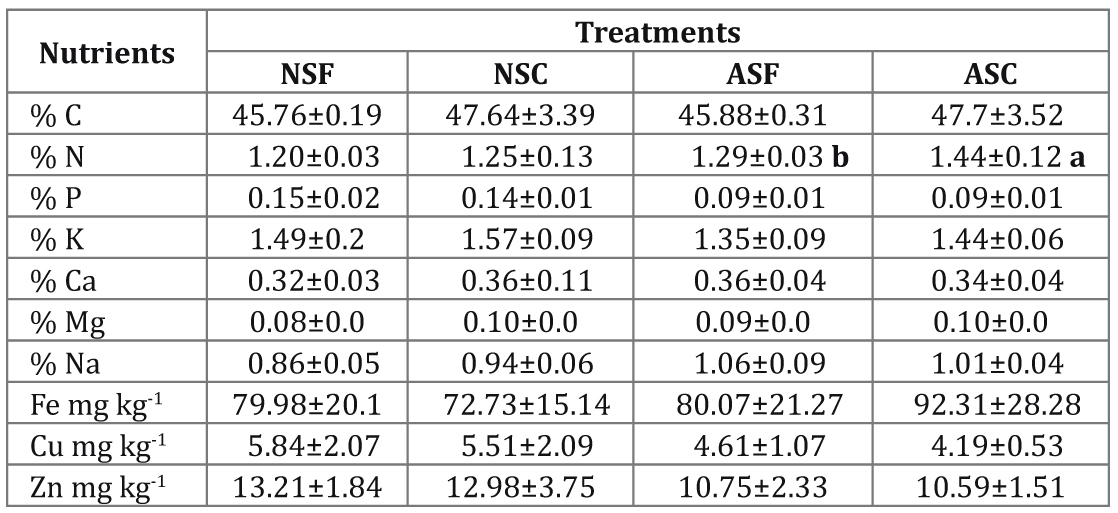Effect of the application of nematophagous fungus Purpureocillium lilacinum over nutrients availability on agricultural soil and yield of Avena sativa
Keywords:
soil fertility, phosphorous, filamentous fungiAbstract
In the present work the application effect of nematophagous fungus Purpureocillium lilacinum over the availability of soil nutrients and the yield of oats plants, using an agricultural soil was evaluated. Two experiments were conducted under greenhouse conditions, one with soil in natural conditions and other with autoclaved soil. In each experiment were handled two treatments with 20 replicates in a completely randomized design; one with the application of P. lilacinum and the other without the fungus application as a control. The soil chemical characteristics: pH, C, N, P, K, Ca, Fe, Cu and Zn were analyzed at the beginning and at the end of the experiment. The variables evaluated on oat plants were: height, fresh and dry weight, nutrients, number of spikelets per plant and the spikelets weight. There were no significant differences between treatments in plants height, the nutrient content of the soil and plants in both treatments, neither in fresh and dry weight in the experiment with natural conditions soil. The positive effect of fungus application was reflected on the greater fresh and dry weight in the experiment with autoclaved soil and the greater number and weight of spikelets of oat plants in both experiments.
Downloads

Downloads
Published
How to Cite
Issue
Section
License
Aquellos autores/as que tengan publicaciones con esta revista, aceptan las Políticas Editoriales.










.jpg)




